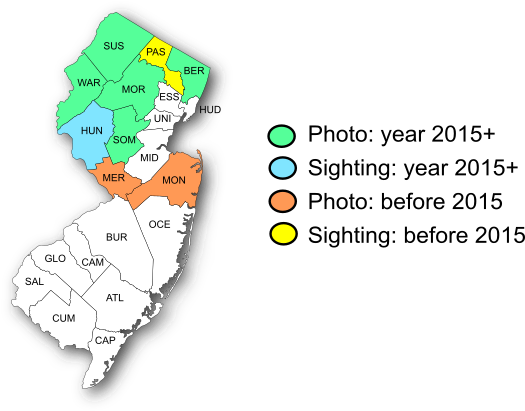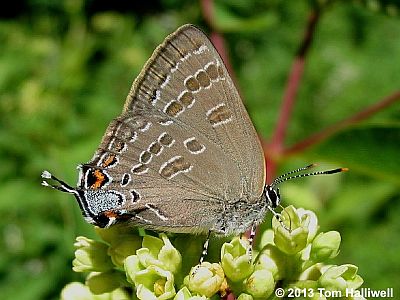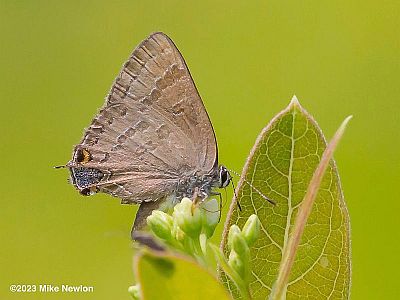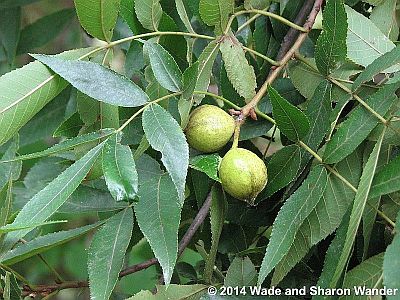New Jersey Butterfly Club
A chapter of the North American Butterfly Association (NABA)
Hickory Hairstreak
Satyrium caryaevorum
Identification: Very small—size of thumbnail. Almost never seen with wings open. Below: FW and HW grayish-brown with slightly darker postmedian bands and cell-end bars edged in white, usually on both sides. The FW band widens toward the Leading wing margin. On HW the cell-end bar and bar touching the leading edge are more-or-less aligned. On HW a pale blue patch extends inward from tails farther than the adjacent orange-and-black spots. Similar hairstreaks: Banded Hairstreak is very similar, and it can be very difficult to separate these 2 species with confidence. In Banded the postmedian bands and cell-end bars are usually edged with white on only one side, but occasionally on both. The FW band does not widen toward the leading margin. Best field mark may be the blue spot on margin of hindwing—in Banded this does not project inward beyond the adjacent orange spots.
NJ Status and Distribution: Classified as Special Concern in NJ. Resident south to Mercer and Monmouth counties. Generally, an increasingly rare species that goes unreported some years. The last notable population explosion was in 2015.

Habitat: Fields with nectar plants (principally milkweed and Indianhemp) near deciduous woodlands with hickories.
Flight Period: One brood that flies from mid-June to early August. Extreme dates: 6/18-8/2.
Caterpillar Food Plants: Hickories (Carya).
Overwintering Stage: Egg.
Good Locations: Occurs too rarely for any one location to stand out.
Comments: This species can be so hard to ID that it’s always good to try to document any sighting with a photograph. For a detailed discussion of how to differentiate Banded and Hickory hairstreaks (and much additional information on hairstreak ID), see the Spring 2016 issue of American Butterflies.

Stillwater Twp., Sussex Co., NJ, 6/21/04, on Indianhemp.

Even on a worn individual, field marks such as the long blue spot and aligned HW bars can be discerned. Glenhurst Meadows, Somerset Co., NJ, 7/5/15, on Indianhemp.

Nuts and leaves of Bitternut Hickory (Carya cordiformis). This upland tree is a food plant for Hickory and Banded hairstreak caterpillars.